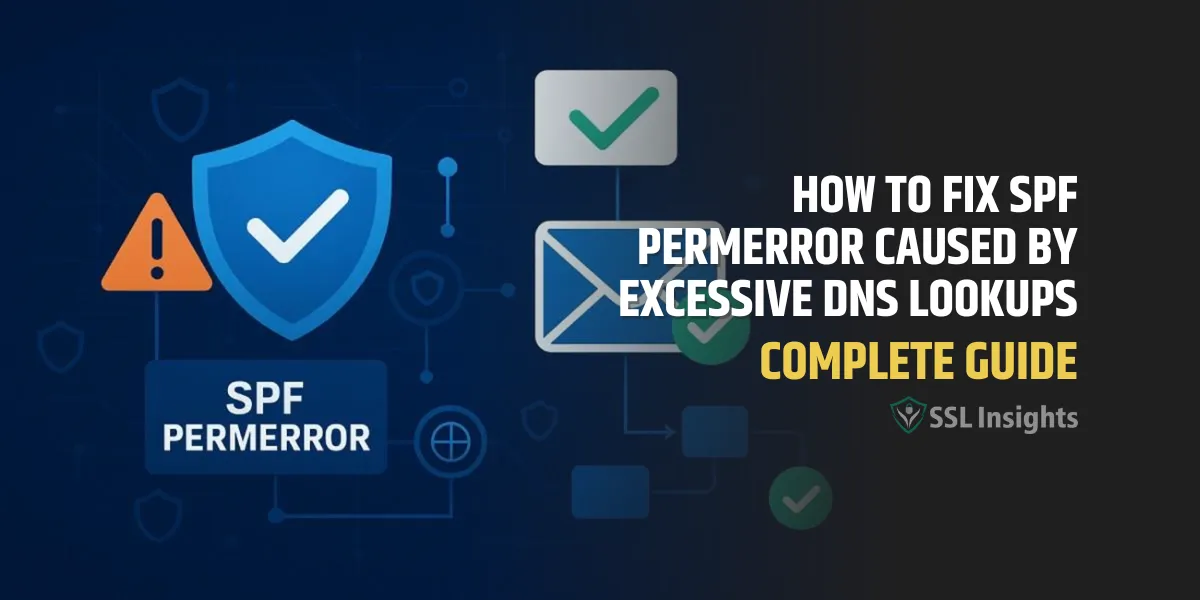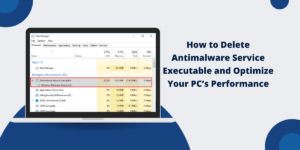The Sender Policy Framework (SPF) is a critical component of email authentication designed to prevent email spoofing and domain spoofing. It enables domain owners to specify which mail servers are authorized to send emails on their behalf. This authorization is published through an SPF record, a type of DNS TXT record that lives in the domain’s DNS zone.
An SPF record lists authorized sending IP addresses and includes various SPF mechanisms such as the ip4 mechanism, ip6 mechanism, a mechanism, mx mechanism, ptr mechanism, include mechanism, and the catch-all all mechanism. When an email is received, the recipient’s mail server performs SPF evaluation by checking the sender’s IP against the published SPF record to determine whether the message passes or fails SPF validation.
The results of SPF evaluation can be SPF pass (authorized sender), SPF fail (unauthorized sender), SPF softfail (suspected unauthorized), SPF neutral (no assertion), SPF permerror (permanent error), or SPF temperror (temporary error). These results significantly affect email deliverability and the effectiveness of email spoofing prevention strategies alongside complementary frameworks such as DMARC and DKIM.
What is an SPF Permerror and Why Does It Occur?
An SPF permerror is a permanent error status indicating that the SPF record could not be properly processed due to a misconfiguration or violation of SPF specification rules described in RFC 7208. Notably, a common cause of SPF permerror is exceeding the mandated DNS lookup limit during SPF evaluation.
When an SPF validation encounters a permerror, the receiving SMTP server cannot reliably authenticate the email via SPF, which can lead to messages being flagged, filtered, or rejected depending on the domain’s SPF policies and how the recipient’s security filters, such as Symantec Email Security, Trend Micro Email Security, or Talos Intelligence Group, react.
In contrast to an SPF temperror, which stems from temporary DNS issues like timeouts, the SPF permerror signals a structural problem in the SPF record. SPF permerror situations require immediate attention to restore reliable SPF validation and maintain strong email authentication.
The Role of DNS Lookups in SPF Validation
During SPF evaluation, various SPF mechanisms and modifiers cause the recipient’s mail server to perform DNS queries. For example, the include mechanism directs the server to fetch the SPF record of another domain, potentially triggering multiple additional DNS TXT record lookups. Similarly, the redirect modifier causes recursive SPF validation by pointing to an alternative SPF record.
Each evaluation must consider these DNS TXT records to verify authorized IP addresses and mail exchange servers. If the SPF record makes use of extensive includes or multiple mechanisms such as mx mechanisms, a mechanisms, or ptr mechanisms, the total number of DNS lookups can accumulate quickly.
DNS queries also involve resolving ip4 mechanisms and ip6 mechanisms, and when nested too deeply, these lead to what’s known as an SPF recursive lookup. The recursive nature of these lookups increases the risk of exceeding predefined limits.
This dynamic is why understanding the DNS lookup limit is essential for anyone managing SPF records or responsible for email authentication within infrastructure providers like Amazon Simple Email Service (SES), SendGrid, Postmark, SparkPost, or platforms like Microsoft Exchange and Zoho Mail.
How to Identify the ‘Too Many DNS Lookups’ Limit in SPF

Common types of DNS queries that contribute to the lookup count include:
- Queries for the domain’s own DNS TXT record containing the SPF data
- Include mechanisms importing other domain SPF policies
- Mx mechanisms resolving the domain’s mail servers
- A and AAAA mechanisms resolving host IPs
- Use of ptr mechanisms, which can be very costly in lookups and are discouraged by many SPF best practices
- Redirect modifiers pointing to alternative SPF specifications
A high number of nested includes or improper use of mechanisms can quickly push this lookup count beyond the threshold. For instance, a single SPF record that incorporates multiple third-party email providers such as Google Workspace, Microsoft 365, and Valimail through include mechanisms may inadvertently cross this limit.
Tools like SPF testing tools from Dmarcian, EasyDMARC, and OnDMARC can help administrators identify when their TXT record has exceeded this limit by performing simulated SPF validations and reporting on the number of DNS lookups and potential SPF syntax errors.
Common Causes of Excessive DNS Lookups in SPF Records
Exceeding the DNS lookup limit is often a result of complex SPF record configurations or improper record maintenance. Some of the most frequent causes include:
Overuse of Include Mechanisms
The include mechanism allows delegation to other domains’ SPF records, such as those used by third-party email sending services like SparkPost or Proofpoint. These includes can cascade—if the included domain also has multiple includes, this creates a chain of recursive lookups rapidly increasing the lookup count.
Multiple Third-Party Email Services
Organizations using several transactional or marketing email services (e.g., Amazon SES, SendGrid, Postmark, Mimecast) often add each provider’s SPF mechanisms to their record. While necessary for SPF record deployment, this complexity can lead to exceeding the DNS lookup limit.
Using Mechanisms with High Lookup Demand
Mechanisms like mx and ptr cause automatic DNS queries to resolve underlying IP addresses and domain names. The ptr mechanism is especially discouraged by SPF best practices due to its heavy DNS query footprint and inconsistent behavior across DNS environments.
Long SPF Record Length
Although SPF records are published as a single DNS TXT record, excessive length via many mechanisms and qualifiers can make the record unwieldy and error-prone, increasing the chance of SPF syntax errors and indirectly contributing to recursive queries if includes point to large records.
Misconfigured Redirect Modifiers
The redirect modifier offers an alternative method of delegating SPF evaluation to another domain, but improper or circular redirect setups can cause both SPF permerror and trigger many unnecessary DNS lookups leading to lookup limit violations.
Lack of SPF Record Modification and Monitoring
Without routine SPF record modification and SPF monitoring, legacy mechanisms or obsolete third-party includes may linger, bloating the SPF record unnecessarily. Continuous SPF reporting through services like Agari or Dmarcian helps identify and rectify such issues proactively.
Using SPF Testing Tools for Debugging
Effective SPF record debugging is essential. Security providers such as Valimail, Dmarcian, and EasyDMARC offer diagnostic utilities that check for the DNS lookup count, SPF record length, and potential pitfalls causing SPF permerror or SPF temperror. These tools support administrators in validating correct SPF syntax, optimizing email deliverability, and strengthening their email security posture against spoofing.
With a clear understanding of how SPF records work, the significance of DNS lookups, and common causes of lookup exhaustion, organizations can take targeted actions to keep their SPF policies within specification limits, thereby avoiding SPF permerror and ensuring consistent, reliable email authentication across platforms like Microsoft 365, Google Workspace, and enterprise email security appliances.
Tools and Methods to Diagnose SPF Permerror Issues
Diagnosing SPF Permerror Issues
Efficiently diagnosing SPF permerror problems requires both technical expertise and the right diagnostic tools.
1. Specialized SPF Testing Tools
Platforms like Dmarcian, EasyDMARC, and OnDMARC offer advanced SPF debugging utilities.
Key Capabilities
- Detect syntax errors and malformed SPF record
- Identify recursive loops and DNS lookup violations
Ensure compliance with RFC 7208 standards
2. Manual Diagnostic Techniques
Administrators can manually analyze email headers from received SMTP transactions.
SPF Result States
- Pass – SPF validation succeeded
- Fail/Softfail/Neutral – Partial or no alignment
- Permerror – Malformed or misconfigured SPF record
- Temperror – Temporary DNS or lookup issue
3. Common Causes of SPF Permerror
- Incorrect SPF syntax or unsupported mechanisms
- Exceeding the 10 DNS lookup limit
- Recursive record references causing loops
4. Integrating SPF with Security Platforms
Tools from Cisco Email Security, Proofpoint, and Barracuda Networks enhance real-time SPF evaluation.
Benefits
- Automated SPF validation and monitoring
- Tracking SPF pass/fail ratios
- Detecting domain and email spoofing patterns
5. Handling SPF Temperror States
After SPF record changes, DNS propagation delays may trigger temporary SPF errors.
Best Practice
Allow time for DNS updates and revalidate SPF records periodically to confirm successful propagation.
Strategies to Reduce DNS Lookups in Your SPF Record
Reducing DNS lookups within your SPF record is vital to prevent SPF permerror triggered by surpassing the maximum lookup threshold. Strategic utilization of SPF mechanisms like `ip4`, `ip6`, `a`, `mx`, and overly reliant mechanisms such as `ptr` must be carefully managed. One practical strategy is minimizing the usage of `include` and `redirect` modifiers, which often cause recursive DNS lookups because each referenced domain’s SPF record is also evaluated.
Many organizations leveraging cloud services like Google Workspace, Microsoft 365, Amazon SES, or third-party transactional email platforms like SendGrid, Postmark, or SparkPost often aggregate multiple third-party mail services into their SPF records. A common pitfall is nesting include mechanisms without auditing the cumulative DNS lookups, leading to recursive loops and eventual SPF permerror.
Optimization tactics include consolidating IP ranges via `ip4` and `ip6` mechanisms, removing deprecated mail servers, and periodically auditing the DNS TXT record length and complexity. Employing SPF record flatteners—a feature available in tools like Valimail or Agari—helps produce a simplified, static list of authorized sending IPs, reducing recursive lookups and improving overall email deliverability.
Best Practices for Designing Efficient SPF Records

Defining a Strong SPF Record
Designing a robust SPF policy begins with creating a clear and concise SPF record in your DNS TXT entry. Authorize only legitimate sending IP addresses while minimizing DNS lookups to stay within the SPF lookup limit. Ensure your SPF syntax aligns with RFC 7208 standards and avoid using unsupported or deprecated mechanisms.
Implementing SPF Mechanisms
Use SPF mechanisms strategically—ip4 and ip6 for specific IPs, and a or mx for domain-authorized mail servers such as Microsoft Exchange or Zoho Mail. Apply include mechanisms carefully when referencing third-party services like Mimecast or Trend Micro Email Security to prevent unnecessary lookups or errors.
Testing and Monitoring SPF Performance
Before deployment, always test SPF record changes using trusted SPF validation tools to verify SPF pass, SPF fail, or neutral outcomes. Strengthen protection against domain spoofing by aligning SPF with DMARC and DKIM. Finally, use SPF monitoring tools like Talos Intelligence Group or Dmarcian to track SPF effectiveness and identify configuration issues early.
Maintaining and Monitoring SPF Records to Prevent Future Errors
- Regular SPF Validation: Continuously validate SPF records using tools and monitoring platforms like EasyDMARC or OnDMARC to ensure proper email authentication.
- Adapt to Infrastructure Changes: Update SPF records whenever mail services or infrastructure evolve (e.g., migration to Google Workspace or adoption of new third-party email platforms).
- Account for DNS Propagation: Deploy SPF changes with consideration for DNS propagation delays to prevent temporary authentication failures.
- SPF Monitoring: Track SPF evaluation statuses such as permerror, temperror, and other outcomes to detect potential issues early.
- SPF Reporting: Leverage SPF reports to identify trends like increasing SPF fail rates or unexpected neutral results.
- Change Management: Implement strict policies for modifying SPF records to avoid syntax errors, exceeding length limits, or creating lookup issues.
- Integration with DMARC & DKIM: Align SPF with DMARC and DKIM frameworks to reinforce overall email security and policy enforcement.
- Audit Recursive Lookups: Regularly check for SPF recursive lookup issues and ensure adherence to SPF best practices.
- Ensure Deliverability: Maintain high email deliverability while effectively mitigating domain spoofing and email spoofing risks.
Key Takeaways
- SPF permerror often results from exceeding DNS lookup limits or SPF syntax errors, adversely impacting email deliverability and security.
- Efficient SPF record design involves minimizing DNS lookups by optimizing SPF mechanisms and limiting `include` and `redirect` usage.
- Utilizing SPF testing tools and performing careful SPF record debugging ensures proper SPF evaluation and deployment.
- Regular SPF monitoring and reporting alongside DMARC and DKIM integration enhance overall email authentication and protection against spoofing.
- Real-world case studies underline the importance of continuous SPF record maintenance and strategic email security policy management.

Priya Mervana
 Verified Web Security Experts
Verified Web Security Experts
Priya Mervana is working at SSLInsights.com as a web security expert with over 10 years of experience writing about encryption, SSL certificates, and online privacy. She aims to make complex security topics easily understandable for everyday internet users.



